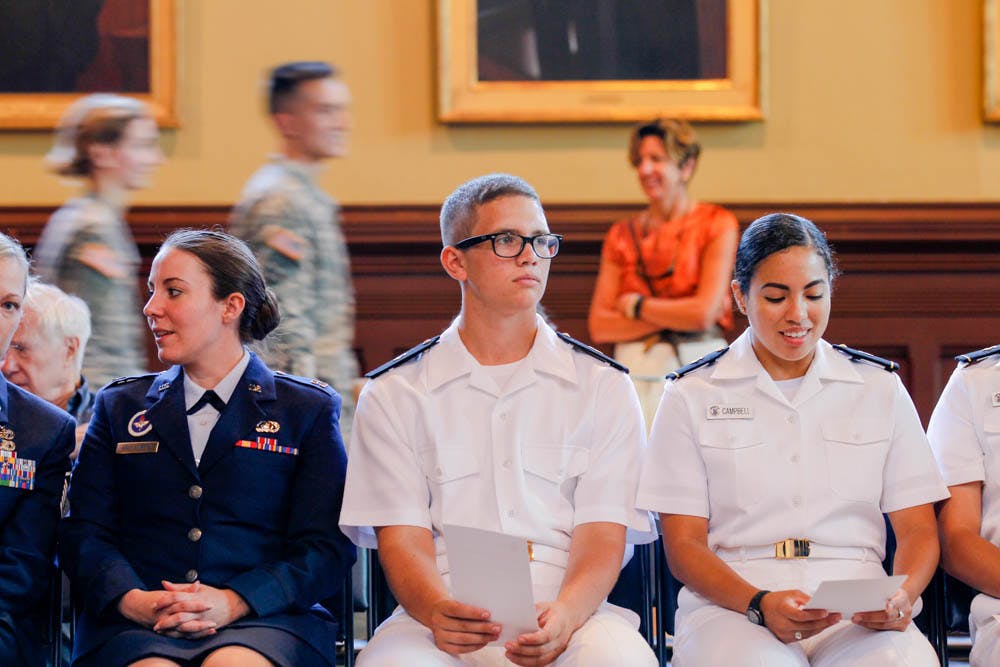This is the first semester since the Vietnam War that the Naval and Air Force Reserve Officers’ Training Corps program is available for students at Brown because of new partnerships with the College of the Holy Cross for the Navy and Worcester Polytechnic Institute for the Air Force.
Ben Chiacchia ’20, Luc Langlois ’20 and Melia Okura ’20 are the first to participate in this renewed ROTC program. “When they had the ceremony and they were talking about how this will be the first class in such a long time, it made me inspired to work harder because I realized this is a really big thing,” Okura said.
Both programs have physical training requirements and outside classes at the partner universities, which are both located in Worcester, Massachusetts. Langlois and Okura, who are both in the Air Force program, also complete their physical training twice a week at Providence College.
“It’s more of a mental exercise,” Langlois said. “We work really hard (at Brown) and then have to wake up at 5:45 (a.m.) for physical training.”
In the Air Force classes, Langlois and Okura participate in one hour of classroom teaching with hands-on activities “regarding different aspects of the militaries … like rank structure, customs and courtesies,” as well as two hours of class taught by upperclassmen, Okura said.
As part of the naval program, Chiacchia must complete physical training, which varies from “individual effort training or training as a battalion,” he said. The students must also take a two-hour round-trip commute to their ROTC classes. Chiacchia must adhere to a specific course selection — including English, calculus, physics, a security policy class and a cultural awareness class — at Brown, as well as attend naval orientations twice a week with “a speaker, more physical training or working through a case study,” he said.
“(ROTC) instills the skills and temperament that allow us to go into situations and lead people in a way that’s effective,” Langlois said. “It shows us how to be a leader rather than a boss.”
“You learn so many things that can be applied to daily life,” Okura said.
The presence of ROTC has had a contentious history at Brown since 1969. As a result, there was concern on campus about the reactions that students would have to the participants in the new programs. While Chiacchia has had some negative encounters, “thus far the reaction has been overwhelmingly positive,” he said.
“I’ve never gotten a negative reaction,” Okura said, adding that most of the positivity she has encountered has concerned the physical training she is required to complete.
“The on-campus atmosphere has been very positive,” said Karen McNeil, program director of the Office of Student Veterans and Commissioning Programs.
ROTC is “not the most ubiquitous group on campus,” Langlois said. “I don’t think it is known enough that this is a program at Brown.”
Part of the program’s lack of recognition also comes from its size, McNeil said. “It would be better for the (participants’) experience if the community was bigger,” McNeil said, adding that the program is comprised of the three new students and three preexisting army ROTC students.
“I want Brown to be a part of the community and be really represented,” Chiacchia said.
McNeil said she believes an expansion of ROTC at Brown would benefit all students by bridging the military-civilian divide. “When you have a traditional student at Brown and they meet someone from ROTC, a lot of times it’s the first time they have ever met someone in the military,” McNeil said. “Many of the students at Brown are going to be leaders in their communities, and experience with the military community is really important.”





